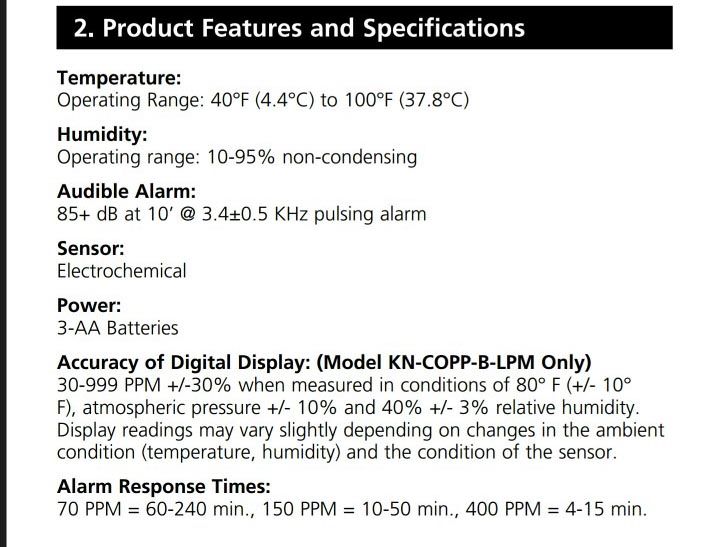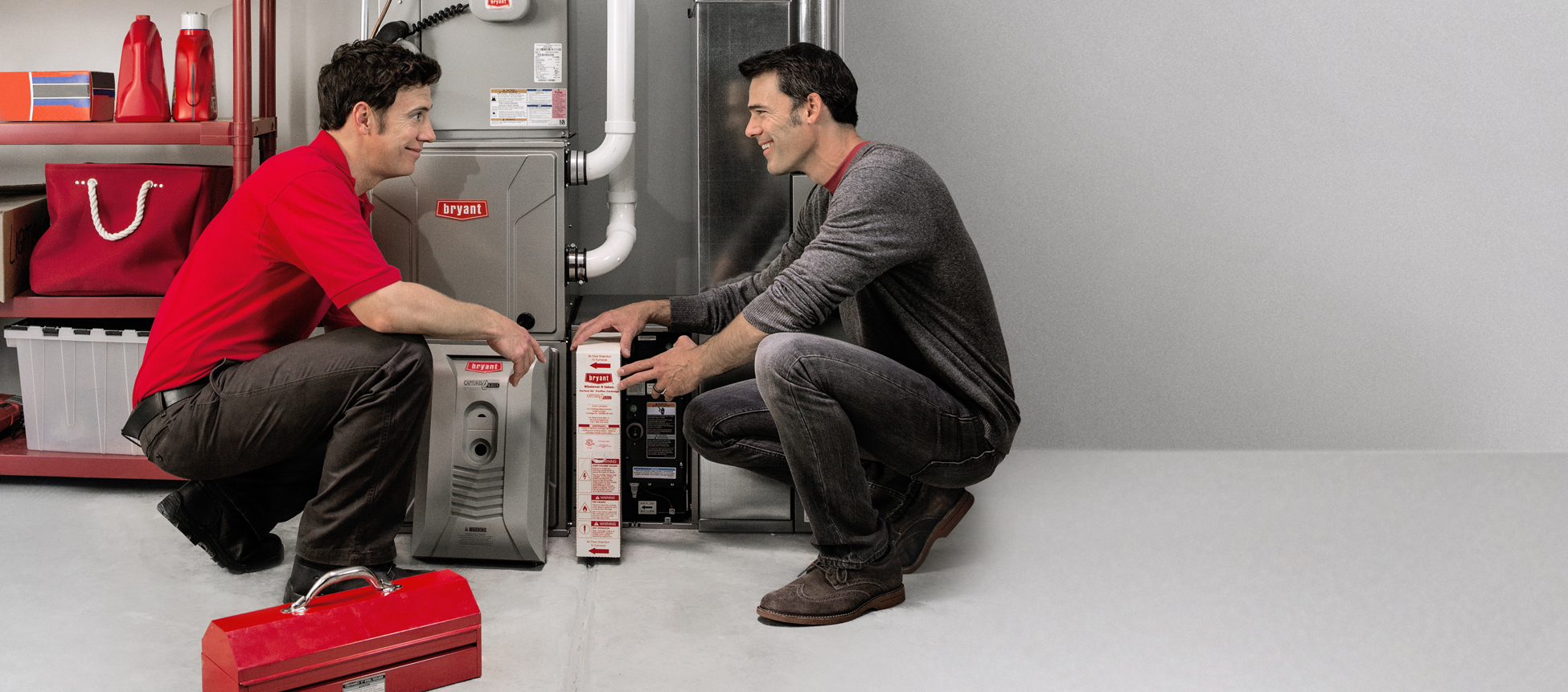CO (Carbon Monoxide) is a odorless, colorless gas that is produced by home fuel-burning appliances. It is known as the “silent killer” being that people have gone to sleep and not woken up from CO poisoning. Properly installed appliances pose minimal threat to your safety. However, under certain conditions, any appliances that burn fuel can leak deadly levels of CO into your home.
So how effective is that home carbon monoxide alarm? You may be surprised to find out the parameters and tolerances accepted by your alarm and what they actually mean.
Above is the specifications for a Kidde CO alarm, this picture was taken right out of the user guide that comes with every new device. What is concerning to us is the alarm response times for amount of CO exposed to the device before it will alarm. Kidde CO alarms have to be exposed to 70 ppm for 1 to 4 hours, 150 ppm for 10-50 min, and 400 ppm for 4 – 15 minutes without a drop in ppm (parts per million) before it will sound. So, if the front door opens and lets fresh air in, for just a brief minute, it would restart the countdown. Air flow throughout a central heating and cooling system is enough to disrupt the sensor.
The problem with low level carbon monoxide exposure is that it slowly builds up in your blood stream making it hard to diagnose. Individuals may go weeks slowly developing flu like symptoms such as headaches, dizziness, and vomiting. The only way to know if you have CO poisoning is by taking a blood test to determine the severity. More information about long periods of low level CO exposure can be found at coexperts.com.
It is very important to install your detector according to the instructions it come with. Installing the device away from doors and obstructions is recommended. Also, keep clear of any vents or nearby windows. These alarms can only detect CO at the sensor located inside, making it possible for CO to be present in other parts of your home and not affect the alarm.
If you suspect you may have a CO problem and your alarm is not working, or you don’t have one, don’t wait to take action and call to have your equipment professionally examined and the whole house tested properly. We offer comprehensive furnace reliability checks. Our technicians have had special training on all makes and manufacturers from Heat Exchanger Experts to properly assess the condition of a furnace.
As Heating and Air Conditioning professionals, our duty is knowing signs and symptoms of carbon monoxide. HVAC equipment, if not installed correctly or properly maintained will create the opportunity for dangerous CO hazards. Being able to properly examine furnaces and recognize potential failures is very important. Failure to recognize or take action could make the contractor liable for any damage or injuries that occur.
Give us a call today to schedule a clean and safety inspection! 219.476.3776


